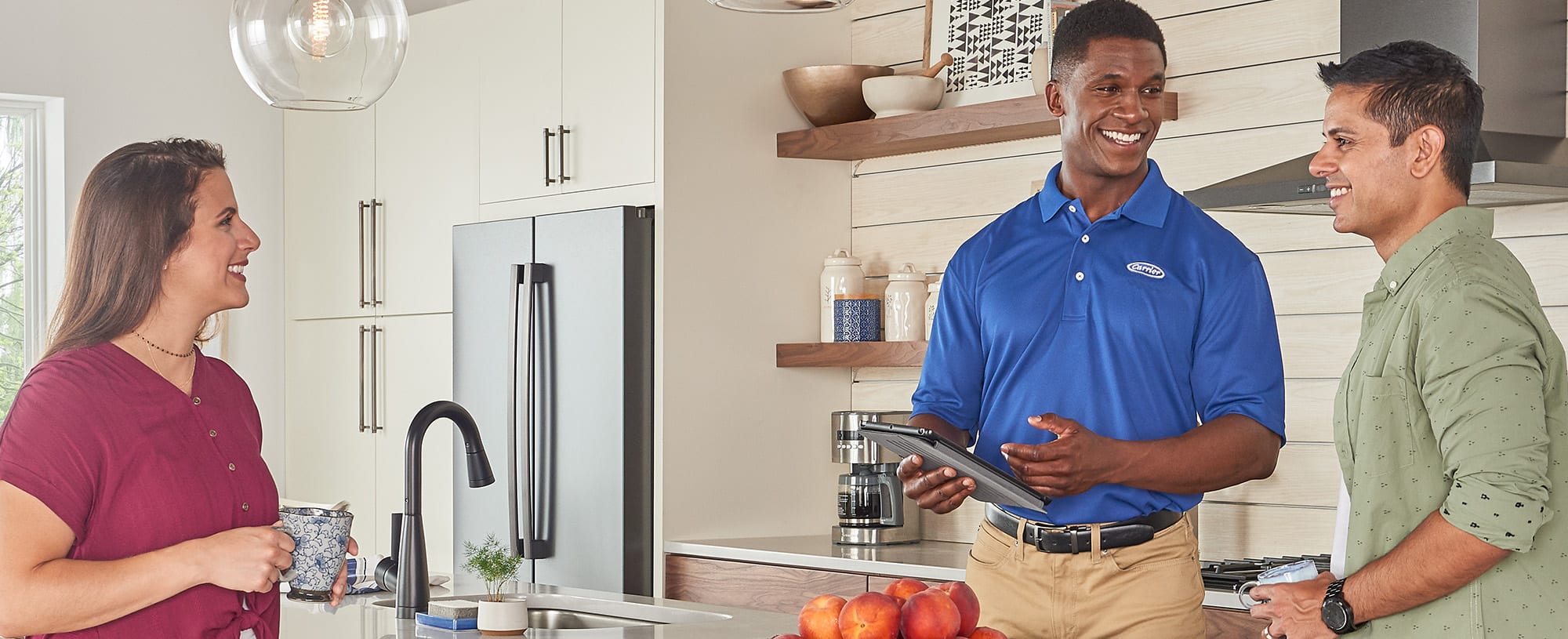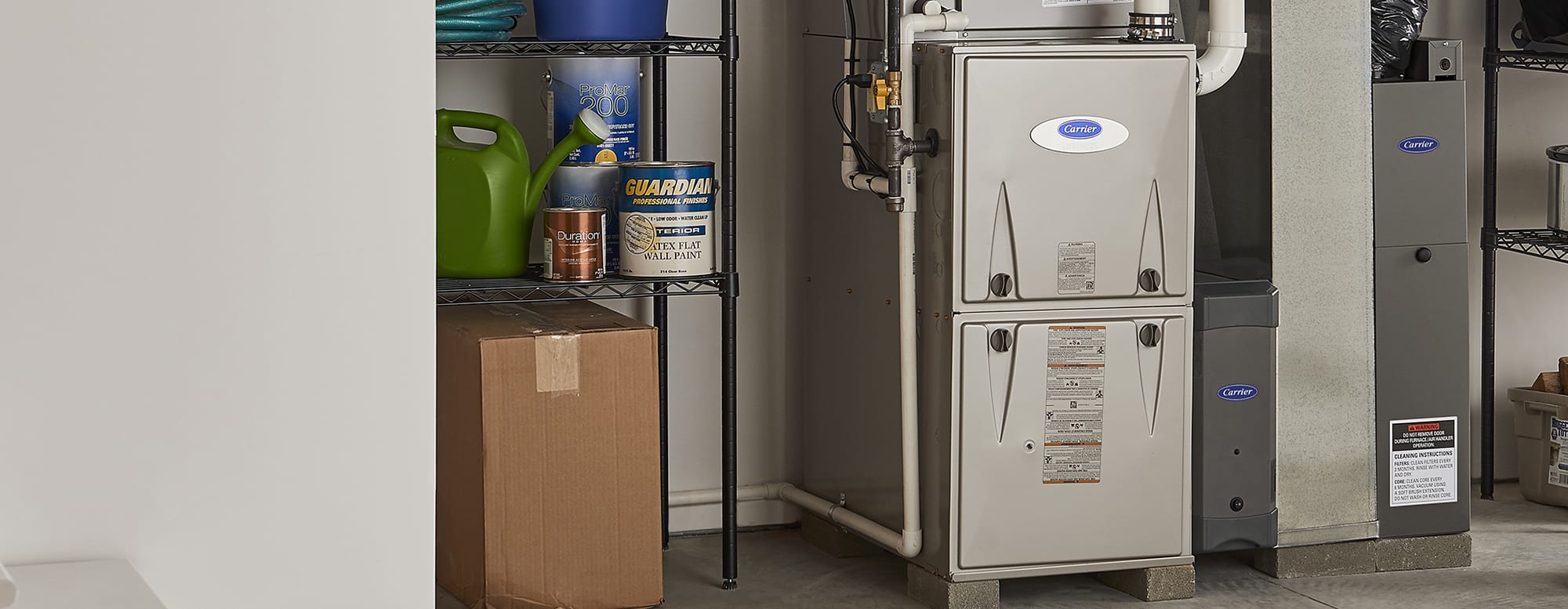Gas Furnace Replacement
In the United States, natural gas furnaces are the heating systems of choice for many families. It’s easy to see why. They are efficient, effective, and there’s nothing like the warm, cozy feeling of heated air coming from the registers on a cold, winter day.
But what happens when your furnace’s performance doesn’t leave you so warm and fuzzy? Before your mind goes right to gas furnace replacement and its annoying sibling, gas furnace replacement cost, there’s a lot to consider. Sometimes, your system just needs a tune-up or a minor repair. Other times, especially if it’s older, a major expense might be looming.
If “furnace replacement” does find its way to the top of your to-do list, this article is for you. We'll cover the basics, like when to replace gas furnaces, what is the average cost to replace gas furnaces, what additional expenses might be associated with replacing furnaces, and other details to consider.
While it might be sad saying goodbye to your trusty old heater, saying hello to one of the many Carrier gas furnaces available can warm your heart and open the door to improved comfort and energy efficiency.

When to Replace Gas Furnaces
You can expect a gas furnace to provide 15-20 years or more of reliable operation. But what happens if you start noticing increased energy costs, strange sounds coming from your system, or your home just isn’t staying very comfortable? Even the most dependable heating system will eventually need to be replaced. And all too often, it happens in the middle of winter, when it’s an emergency, when HVAC technicians are busy, or when your choices are limited to available stock. So, when are the best times to replace gas furnaces?
Ideally, try to have your new furnace installed in the spring or summer – when you don’t need the furnace immediately for heating. This will give you a little more time to weigh your options, and maybe even save a little money too. Here are some signs that a new furnace might be a good idea:
- Repairs are becoming more frequent and more expensive
- Your furnace is showing signs of malfunction, such as:
- making weird noises
- showing signs of rusting or cracking
- emitting dust or soot
- smells funny when running
- running constantly
- turning on an off more frequently
- Heating energy bills are getting higher for no apparent reason
- Heating in the home is worse than before or uneven
These issues may just mean that your furnace needs some basic maintenance or a minor gas furnace repair. They could also mean your furnace is getting to the end of its lifespan and needs to be replaced, especially if the repairs are getting expensive compared to the cost of a new one. If you are concerned, now would be a great time to contact your local Carrier expert to assess the situation.
What is the Cost to Replace a Gas Furnace?
The cost to replace gas furnaces can vary quite a bit. A new gas furnace can have average costs ranging from $3,800 to $12,000. These price ranges depend upon the types of furnaces and whether installation costs are included. For example, a basic, single stage unit without installation will cost quite a bit less than a highly efficient furnace with materials and labor charges included.
Other factors that can impact the gas furnace cost include the size (heating capacity), comfort-enhancing features like variable-speed fans or multi-stage heating, and efficiency-enhancing features like a secondary heat exchanger. The fuel source can affect pricing as well. The initial cost for an electric furnace, including installation, is typically less than the cost for a similarly sized gas furnace with installation but the ongoing heating costs for an electric furnace could cost significantly more money, especially in colder climates.

Additional Gas Furnace Replacement Costs
As you narrow down the choices for your new heating system, it’ll be important to budget for all of the associated gas furnace replacement costs. Labor, materials, permits, inspections and any additional equipment like indoor air quality accessories can really add up.
- Labor costs for the installation are a given, unless you are a trained HVAC professional and can do it yourself. For a licensed HVAC technician, expect to pay around $50 - $100 per hour1 , and you will likely have more than one person on the crew which will incur additional fees. Of course, a bigger crew can get the job done faster.
- If the current setup doesn’t work for your new furnace, expect to add new ductwork and/or ventilation to your installation cost. Charges could be minimal if only simple modifications are needed. For a more extensive job, or installing new ductwork for the entire home, you can expect to pay quite a bit more.
- Some states or municipalities may require special permits, inspections or both. If required, you might expect to pay anywhere from $400 - $1,500.2
- Increasing the size (heating capacity) of your furnace can increase the cost of your furnace as well. This might be the case if your old one is undersized, or if a larger unit is needed to accommodate additional heating for a room addition.
- Indoor air quality accessories such as a whole-home humidifier, air purifier and ultra-violet germicidal lights are often installed with a new furnace. These types of accessories can be added later, but it is usually more cost-effective to include them during the furnace installation.

What to Consider for a Gas Furnace Replacement
While price is important, there are other factors to consider when shopping for a gas furnace replacement. You’ll get your best value when you choose a model that provides benefits beyond basic heating. Here are some factors to think about as you balance initial budgeting concerns with long-term value and satisfaction:
- Correct furnace size -- Your HVAC technician should be able to assess your home and calculate the heating capacity you’ll need to keep comfortable. This determines the correct furnace size. Don’t just assume your old system was sized correctly – that might be why you are shopping for a new one!
- Newer technology – Today's furnaces can include a number of features that make heating more consistent and energy efficient. Variable-speed models can smooth out airflow to more evenly distribute heat. They can also help dehumidify during the summer months as part of your cooling system. Multi-stage models can adjust heating capacity as needed to improve both comfort and fuel economy.
- Energy efficiency – A highly efficient furnace might cost more up front but can save money on heating bills for the life of the unit. Consider an ENERGY STAR® certified model that might qualify for local utility company rebates or U.S. tax credits.
If this is the first time you have had to purchase a furnace, it might be a good idea to learn a little more about how gas furnaces work and what they can do to improve your comfort. The more you know, the easier your decision will be!

Frequently Asked Questions
Replacing a gas furnace is a bit more complicated than getting a new refrigerator or washing machine. It’s a topic that generates a little more anxiety and a few more questions than other appliances. Here are a few frequently asked questions we hear on a consistent basis:
- Can I replace my furnace myself? Replacing a furnace isn’t a recommended DIY type of project. HVAC contractors receive special training on the many aspects of installation, including how to properly and safely connect natural gas lines, electrical wiring and venting. All must be done correctly and according to local building codes to ensure safe operation.
- How long does it take to install a gas furnace? A typical, standard installation with minimal modifications to ductwork should take around a day. A more complex installation with new ductwork and other components like an air conditioner or air purifier can take longer.
- What can I do to prepare for the installation? Try to clear a path through your home to make bringing in your new furnace and removing the old one easier. Secure pets so they don’t get out or get in the way. Put down a drop cloth or tarp over carpeting/flooring near the installation area.
Replacing a gas furnace won’t top the list of things most homeowners get excited about. To make the process as smooth and stress free as possible, be sure to plan ahead. Watch for signs that an older furnace needs attention. After about 15 years or so, it’s time to consider whether an expensive repair is worth it. Think about replacing it before it’s an emergency, and research new furnaces from reputable manufacturers like Carrier. And, be sure to contact your local Carrier dealer if you have any questions or wish to set up an appointment to assess your heating needs.
1https://www.angi.com/articles/common-gas-furnace-prices.htm
2https://www.homeadvisor.com/cost/heating-and-cooling/install-a-furnace/
- Read about how a gas furnace works

